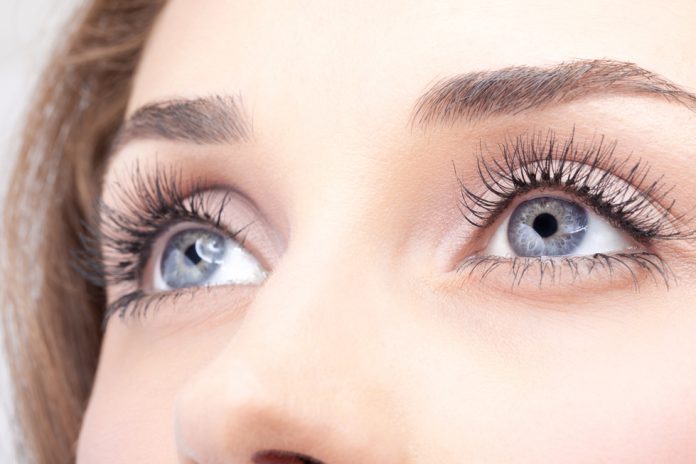A look at the vision health category
By Allison Tannis
Take a closer look. Vision/eye health ranks among consumers’ top five health concerns, according to the 2013 HealthFocus International Trend report. Plus, vision health concerns increase with age, making baby boomers – Canada’s largest spending consumer group – the key market. Can you see the potential in the vision health category?
A glance at sales performance
The vision health category is a steady performer, but grew only six per cent in 2012, according to Nutrition Business Journal. Why are these numbers are not as high as one might predict?
According to Virginia Dare’s 2012 Boomer Health Study, more than half of boomers surveyed said eye health was very important to them, but they are not well informed about how to care for their eyes. That and other studies concur that many consumers are unaware of the potential of vitamin C or lutein for eye health.
“Consumers are usually looking for other health issues first, like omega-3s, probiotics or weight loss products. Eye-related health products are always secondary in their conversations with us,” says Katrina Haché, a wellbeing counselor at Sobeys.
Increasing consumer awareness of products that offer eye health benefits could boost sales at retail. Many consumers would be surprised to learn that there is even such a thing as “eye vitamins.”
What sells?
Of the adults who take dietary supplements, seven per cent use a supplement for eye health, according to a 2011 Gallup Study. The report notes that the most marketable dietary supplements for eye health to mainstream consumers are antioxidants. Over the past decade, antioxidants have had a strong place in the health food channel and are gaining movement in the mass market.
Combination supplements are experiencing better sales in the U.S.: in mass market, eye health multivitamins such as Ocuvite are strong sellers, second only to top selling Centrum Silver and Flintstones vitamins. According to Haché, customers in the Sobeys wellbeing department are looking for formulas designed specifically for eye health, such as Vogel’s Sharp Vision.
Pycnogenol® – which acts in synergy with lipophilic antioxidants such as Lutein to provide antioxidant protection against oxidative-stress related degenerative processes like retinopathy (a diabetic complication) in the eyes.
According to Erik Klyve, Supplement Manager at Goodness Me, “[Consumers] are not going for a multi, they tend to go for a more specific item. Typically people lean towards lutein or a bilberry extract if they are a little bit more aware…the average consumer goes to the eye health section…they want something for their eyes but don’t really know what they are looking for.” In all Goodness Me stores, there is a clearly labeled eye health section, which includes lutein, a few combination products specifically for eye health and traditional herbals such as eyebright.
Traditional medicines that promote eye health include bilberry and eyebright. According to a 2013 report by Agriculture and Agri-Food Canada, bilberry has a well-deserved reputation as a useful herbal medicine and therefore promises a growing market. Bilberry was ranked as the fifteenth best-selling single herb supplement in United States mainstream retail, which includes grocery stores, drug stores and mass-market retail stores.
According to these retailers, a successful vision/eye health section is made up of mostly multi-ingredient supplements specifically targeting eye health. A smaller percentage of product SKUs is represented by key vision health antioxidants and traditional herbal medicines.
Looking outside of the box for areas of growth
The greatest potential in the vision/eye health category may lie in food products. Studies show a diet high in fats and low in nutrients may increase the risk of developing age-related macular degeneration (AMD). Meanwhile, a diet rich in omega-3 fatty acids, fresh fruit and dark green leafy vegetables provides nutrients and antioxidants that are healthy for the macula of the eye.
There is both scientific support and consumer willingness to eat foods that promote eye-health. According to Packaged Facts 2012, more than three quarters of grocery shoppers agreed that eye health had an influence on their food purchase decisions.
Improving consumer understanding of the relationship between food and health can build consumer confidence and sales. Retailers like Sobeys have been actively creating an in-store environment that fosters this.
“A large majority of the consumers who shop in our wellbeing departments are in the 50+ age group, and cooking has become a hobby,” says Haché. People are coming in and looking for reduction of symptoms through food.”
When consumer knowledge is low, marketers have found foods with labels highlighting the health potential are successful first-to-market products. In the U.S., Green Giant has enjoyed success with a vegetable blend labeled as being good for eye health.
Creative merchandizing including a wider diversity of vision/eye health related products can help retailers attract the eye of a larger consumer base, while educating consumers about the many ways they can promote eye health.
Millions of Canadians live with some form of AMD, diabetic retinopathy, glaucoma or cataracts. Since most major eye conditions in Canada are age related, the number of Canadians with vision loss is projected to double over the next 20 years. And many of these consumers suffer symptoms that are somehow related to the vision loss. People with vision loss are three times more likely to experience clinical depression and four times more likely to have serious hip fractures. Smoking cigarettes and exposure to sunlight can dramatically increase risk of age-related macular degeneration (AMD). So vision/eye health consumers are more likely to be interested in mental health, bone health and smoke cessation products, sunglasses, wide-brimmed hats.
Now, you see it
Three quarters of vision loss is avoidable, according to the Canadian National Institute for the Blind. Research studies have found many natural health products can help prevent vision loss and eye health problems. Increasing the focus on consumer awareness may boost sales in this already growing market. To achieve this, retailers can offer educational seminars and materials both in-store and online. To catch the eye of potential consumers, retailers can merchandize vision/eye health products in a clearly labeled section, and create displays that highlight the diversity of products available, both conventional (foods, antioxidants, multivitamins) and those outside the box (sunglasses, mood balancing supplements).
[Table] Natural Products for Eye Health: Claims, Dosages and Cautions
Alpha Lipoic Acid
Claim: Provides antioxidants for the maintenance of good health.
Dosage (adult): not to exceed 600 milligrams per day
Cautions: Consult a health care practitioner prior to use if you have diabetes, are pregnant or breastfeeding.
Bilberry Extract
Claim: Used in Herbal Medicine to help slow the progression of disorders of the eye, such as diabetic hypertensive retinopathy, and macular degeneration.
Dosage (adult, standardized extract): 12-75 grams per day, fruit 36% anthocyanosides
Cautions: For progression of disorders of the eye, or relief of symptoms related to non-complicated VDI consult a health care practitioner if symptoms worsen.
Black Currant Extract (No Health Canada Monograph)
Claim: Unknown
Dosage: 50 mg per day has been used in clinical studies
Cautions: Do not use if you have a known allergy or hypersensitivity to blackcurrants. Consult a health care practitioner prior to use if taking antihypertensive agents, antiarrhythmics, diuretics, blood thinners, monoamine oxidase inhibitors, or have epilepsy.
Copper
Claim: A factor in the maintenance of good health.
Dosage (adult): 65-8000 micrograms per day
Cautions: None
Eyebright Extract (No Health Canada Monograph)
Uses: Used for general eye health enhancement, and to reduce the risk of developing age-related macular degeneration.
Dosage: 100 – 860 milligrams per day
Cautions: No interactions are known.
Lutein and Zeaxanthin (No Health Canada Monograph)
Claim: Provides antioxidants for the maintenance of good health.
Dosage: 6-20 milligrams per day to decrease risk of AMD, up to 40mg safe in studies
Cautions: No interactions known. Consult a health care practitioner if you are pregnant or breastfeeding, or smoke cigarettes.
Lycopene
Claim: Provides antioxidants for the maintenance of good health.
Dosage (adult): not to exceed 30 milligrams per day.
Cautions: None
Omega-3 Fatty Acids (from Fish Oil)
Claim: Source of omega-3 fatty acids for the maintenance of good health.
Dosage (adult): 100-5000 milligrams of EPA+DHA per day
Cautions: None.
Pycnogenol (French Maritime Pine Bark Extract)
Claim: Acts in synergy with lipophilic antioxidants such as Lutein to provide antioxidant protection against oxidative-stress related degenerative processes like retinopathy (a diabetic complication) in the eyes.
Dosage: For diseases of the retina: 50 mg three times daily.
Cautions: Consult a health care practitioner if you have an auto-immune disease, take medications that decrease the immune system, are a woman who is pregnant or breastfeeding, or if you have upcoming surgery.
Selenium
Claim: An antioxidant for the maintenance of good health.
Dosage (adult): 3.5 – 400 micrograms per day
Cautions: Consult a health care practitioner prior to use if you have a history of non-melanoma skin cancer.
Vitamins A
Claim: Helps to maintain eyesight.
Dosage (adult): 65-3000 micrograms retinol activity equivalents per day
Cautions: None
Vitamin C
Claim: An antioxidant for the maintenance of good health.
Dosage (adults): 6 – 2000 milligrams per day
Cautions: None
Vitamin E
Claim: An antioxidant for the maintenance of good health.
Dosage (adult): 1 – 500 milligrams alpha-tocopherol per day
Cautions: Consult a health care practitioner prior to use if using doses of or greater than 180 milligrams and have cancer; using doses of or greater than 268 milligrams and have cardiovascular disease or diabetes; using doses of or greater tan 360 milligrams and are taking blood thinners.
Zinc
Claim: Helps to prevent zinc deficiency.
Dosage (adult): 0.7 – 25 milligrams per day of zinc picolinate
Cautions: None









